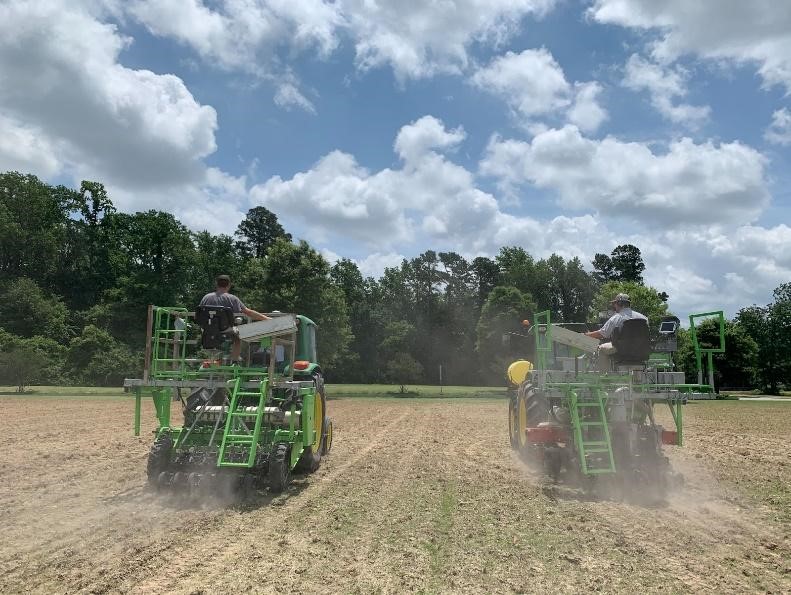Precision Planted Versus Drilled Soybeans
go.ncsu.edu/readext?896036
en Español / em Português
El inglés es el idioma de control de esta página. En la medida en que haya algún conflicto entre la traducción al inglés y la traducción, el inglés prevalece.
Al hacer clic en el enlace de traducción se activa un servicio de traducción gratuito para convertir la página al español. Al igual que con cualquier traducción por Internet, la conversión no es sensible al contexto y puede que no traduzca el texto en su significado original. NC State Extension no garantiza la exactitud del texto traducido. Por favor, tenga en cuenta que algunas aplicaciones y/o servicios pueden no funcionar como se espera cuando se traducen.
Português
Inglês é o idioma de controle desta página. Na medida que haja algum conflito entre o texto original em Inglês e a tradução, o Inglês prevalece.
Ao clicar no link de tradução, um serviço gratuito de tradução será ativado para converter a página para o Português. Como em qualquer tradução pela internet, a conversão não é sensivel ao contexto e pode não ocorrer a tradução para o significado orginal. O serviço de Extensão da Carolina do Norte (NC State Extension) não garante a exatidão do texto traduzido. Por favor, observe que algumas funções ou serviços podem não funcionar como esperado após a tradução.
English
English is the controlling language of this page. To the extent there is any conflict between the English text and the translation, English controls.
Clicking on the translation link activates a free translation service to convert the page to Spanish. As with any Internet translation, the conversion is not context-sensitive and may not translate the text to its original meaning. NC State Extension does not guarantee the accuracy of the translated text. Please note that some applications and/or services may not function as expected when translated.
Collapse ▲Each day this week we are releasing information delivered at the Soybean Field Day at the NCDA&CS Piedmont Research Station in September for those who could not attend.
Producers are increasingly interested in precision planting soybeans, especially with interest in reducing seeding rate as a mechanism to reduce input costs. This research seeks to understand the influence of planting method on soybean uniformity of emergence, soybean stand, soybean height, and soybean yield.
Research in 2021 and 2022 across North Carolina
- This trial was conducted 2021 and 2022 in Edgecombe and Sampson Counties
- Main plot was planter type (precision versus drilled), sub-plot was maturity group (4,5,6), and sub-sub plot was seeding rate (75,000-175,000 seeds/A)
- All treatments were installed on 15 inch row spacing
- Data collected included uniformity of emergence, soybean stand, plant height, and soybean yield
Preliminary Results
- Emergence: Planting method typically did not impact uniformity of emergence
- Plant Height: The drilled soybeans were significantly taller at both locations across maturity groups
- Plant Stand: Planter type did not impact soybean stand at either location
Grain Yield: Yield response to planter type varied between the two locations. In Edgecombe County, the MG4 yielded more when precision planted than drilled. This is presumably due to the varieties ability to branch with more uniform seed placement. Yields were similar between the MG5 and MG6 varieties for both planting methods at the Edgecombe County location. At the Sampson County location, drilled soybeans typically out-yielded precision-planted soybeans. This was unexpected based on previous literature and is hypothesized to be related to root development and stress conditions.
This work was conducted by Dwight Cauthen, Dr. Rachel Vann, and Ryan Heiniger.



